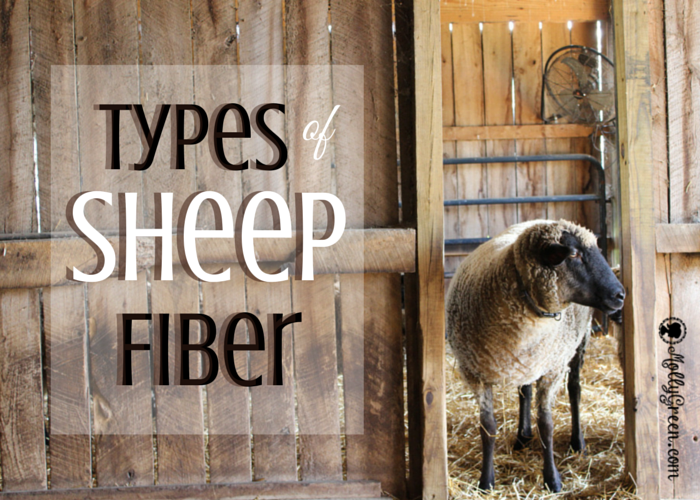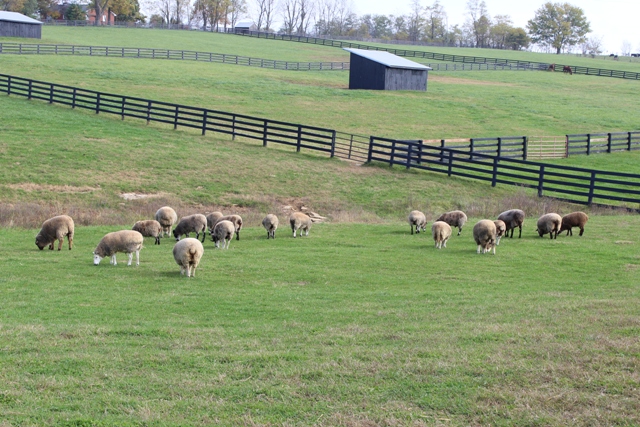By Sherri Lyons
As I go on my journey to find fiber animals for my farm, sooner or later, I had to look into raising sheep. When people think wool or “fiber animals,” sheep are usually on the top of their list. In fact, some people don’t realize there are other animals that fiber comes from. It’s understandable since we have been getting our wool clothing from sheep since 3,500 BC. Columbus even brought sheep to the New World on his second voyage. Their wool became a very important part of America’s history.
Raising Sheep for Wool
Some people may be surprised to know that there are over a thousand different types of sheep in the world. Not all are used for fiber. Some goats are used for meat and some for their milk. But since I’m looking for a fiber animal, we will focus only on that type or breed of wool sheep.
Since there are still many different types of wool sheep, they have been placed into four different categories.
- First, there is the fine wool sheep group. This group makes up 50 percent of all sheep. The diameter of their wool is usually 20 microns or less.
- The medium wool sheep are used mostly for meat. They account for around 15 percent of the sheep population. Yes, they produce wool, but these types of sheep are usually kept for their heavy meat production. Their wool is not as well sought out.
- The long wool sheep have a thicker diameter of wool. It’s usually around 30 microns. These types of sheep are prized by hand spinners for their long strands of wool. These types of sheep are usually bred and grown in cool, wet climates. This is the type of sheep I’m going to be looking into. Although, I’m not sure about how they can take the Appalachian hot, humid weather.
- The last type of wool sheep is the carpet wool sheep. This is the lowest grade of wool and it’s used for making wool carpets. The diameter of the wool is usually over 38 microns. These sheep are usually double coated and have a long course outer layer that helps them to be protected from the harsh weather that they usually live in.
How Long Do Sheep Live?
Since I would be keeping sheep not only for their wool, but for pets also, I wanted to see how long sheep usually live. I checked with a few breeders and keepers of sheep and most told me a well-cared-for sheep should live to be around 10 to 12 years of age, though some sheep have lived to be older. Keeping up with a good worming and hoof-trimming regimen and making sure they have good grass and hay to eat will help out in their longevity.
How Often to Shear Sheep for Wool?
Along with their general feeding and such, I was informed that most sheep need to be sheared twice a year, once in early spring, and once in the fall. Give them enough time in the fall to grow back some wool so they won’t be cold come winter. The sheep farmers told me that winter doesn’t usually give them problems, but keeping the sheep cool in the summer is a little harder. A lot of times the farmers will set fans inside their barns so that the sheep will have a cooler place to go to. Then the sheep will do a lot of their grazing at night. This is when predators come into play.
Sheep are usually content animals. Give them some good grass and they are fine. A good fence isn’t there to keep them in, since they usually don’t push a fence. A good fence is to keep predators out. Coyotes and large cats love sheep. Sometimes you have to worry about the neighbor’s dogs too. So a good fence with small openings or electric wire is usually the best for this. Owning a good livestock guardian dog, like a Great Pyrenees, to live with and protect the sheep will cut down on the midnight raids as well.
The more time that I spent around the sheep while talking to the farmers, the more I really liked their calm nature. Unless they are agitated, the sheep are truly gentle souls. I may be looking into getting myself a few in the near future.
Sherri lives with her husband on a 55-acre farm in the foothills of the Appalachian Mountains. They have cattle, horses, rabbits, and chickens, and now they are looking to get a few fiber animals. You can follow her adventures on her blog www.smallfarmgirl.blogspot.com.






